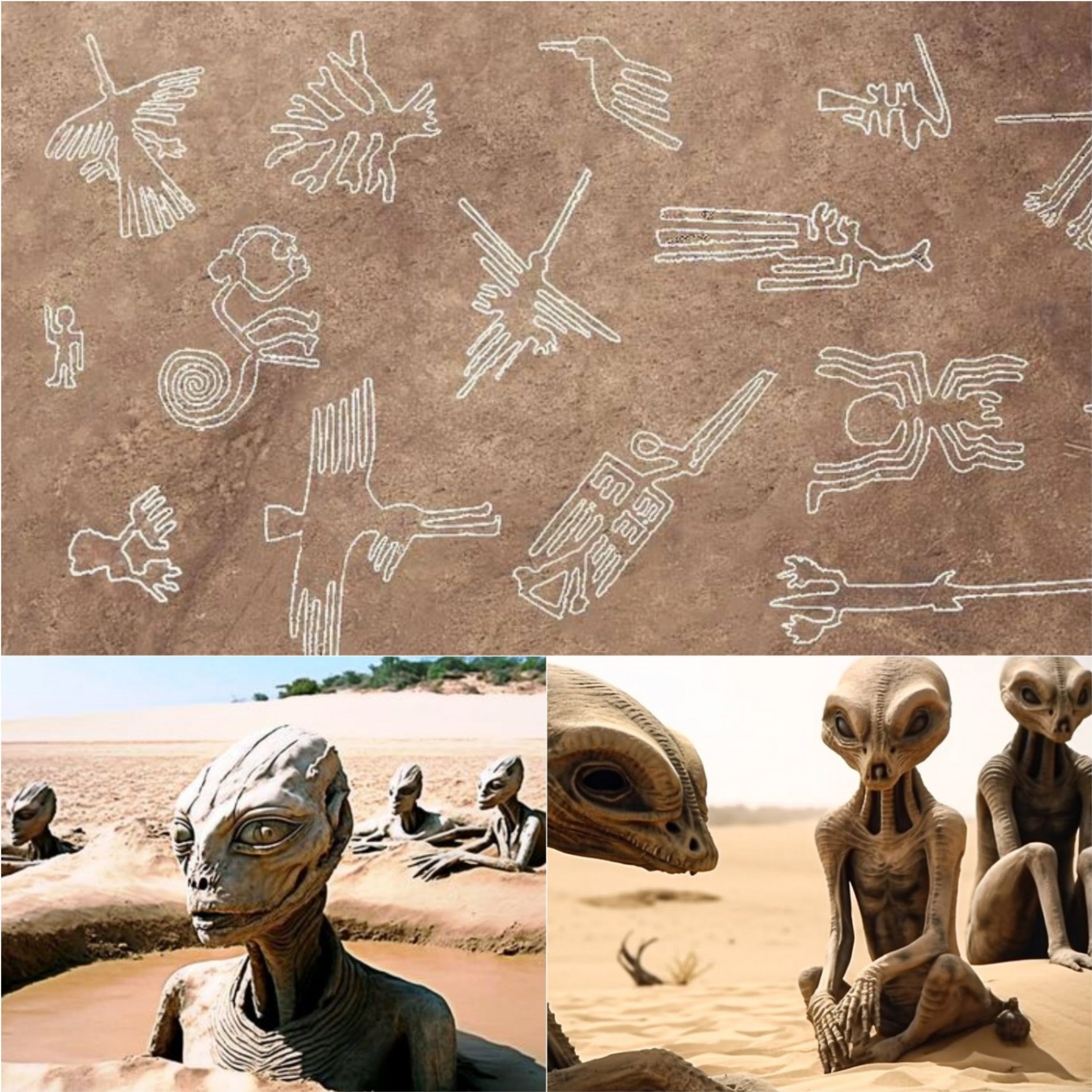The Nazca Lines, etched into the arid landscape of the Peruvian Desert, stand as a testament to the ingenuity and mystery of ancient civilizations. Stretching across miles of barren terrain, these enigmatic geoglyphs have captured the imagination of historians, archaeologists, and curious adventurers for centuries. Shrouded in myth and speculation, the Nazca Lines continue to reveal tantalizing secrets, hinting at the profound knowledge and spiritual beliefs of their creators.

Located in the Nazca Desert, approximately 250 miles south of Lima, Peru, the Nazca Lines comprise a series of intricate designs, including geometric shapes, animals, and humanoid figures. Spanning an area of nearly 1,000 square kilometers, these colossal glyphs were painstakingly etched into the desert floor between 500 BCE and 500 CE by the Nazca culture, a pre-Columbian civilization that flourished in the region.
Despite the passage of millennia, the Nazca Lines have remained remarkably well-preserved, thanks to the arid climate and remote location of the desert. However, it is not their remarkable preservation that has captured the attention of scholars and enthusiasts alike, but rather the puzzling question of their purpose and meaning.
One of the most enduring mysteries surrounding the Nazca Lines is the question of why they were created. While numerous theories abound, ranging from astronomical calendars to religious rituals, the true purpose of these ancient geoglyphs remains elusive. Some researchers speculate that the lines served as ceremonial pathways or markers for sacred rituals, while others believe they were intended as offerings to the gods, visible only from the heavens above.
The complexity and precision of the Nazca Lines have led many to marvel at the ingenuity of their creators. Despite the lack of modern technology, the Nazca people were able to create intricate designs that spanned hundreds of meters with astonishing accuracy. How they achieved such feats of engineering remains a subject of debate, with some suggesting the use of simple tools and labor-intensive techniques.
In addition to their remarkable craftsmanship, the Nazca Lines also contain hidden messages and symbols that offer clues to their meaning. Recent advances in technology, such as drone photography and satellite imaging, have enabled researchers to uncover previously unseen patterns and alignments within the geoglyphs. These discoveries have sparked renewed interest in deciphering the ancient messages encoded within the Nazca Lines.
One theory posits that the Nazca Lines may have served as a form of communication or navigation for the Nazca people, guiding travelers through the desert or marking important landmarks. Others believe that the lines were part of a larger ritualistic complex, designed to appease the gods or commemorate significant events in the Nazca calendar.
Despite the wealth of research and speculation surrounding the Nazca Lines, many questions remain unanswered. The true meaning and significance of these ancient geoglyphs continue to elude scholars, inspiring ongoing exploration and discovery in the Peruvian Desert.
As visitors flock to the Nazca Desert to marvel at these awe-inspiring creations, one thing remains certain: the Nazca Lines are a testament to the enduring legacy of the ancient civilizations that once thrived in the region. Whether they were created as sacred symbols, celestial calendars, or mystical pathways, the Nazca Lines stand as a reminder of humanity’s insatiable quest for knowledge and understanding in the face of the unknown.